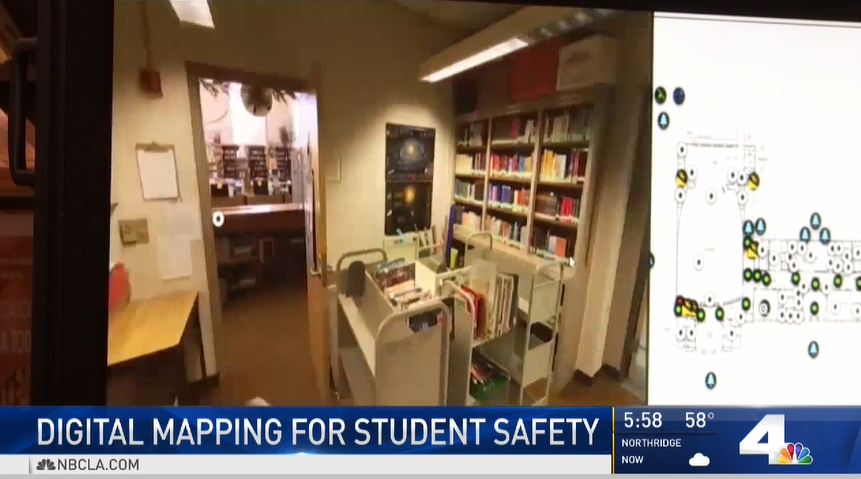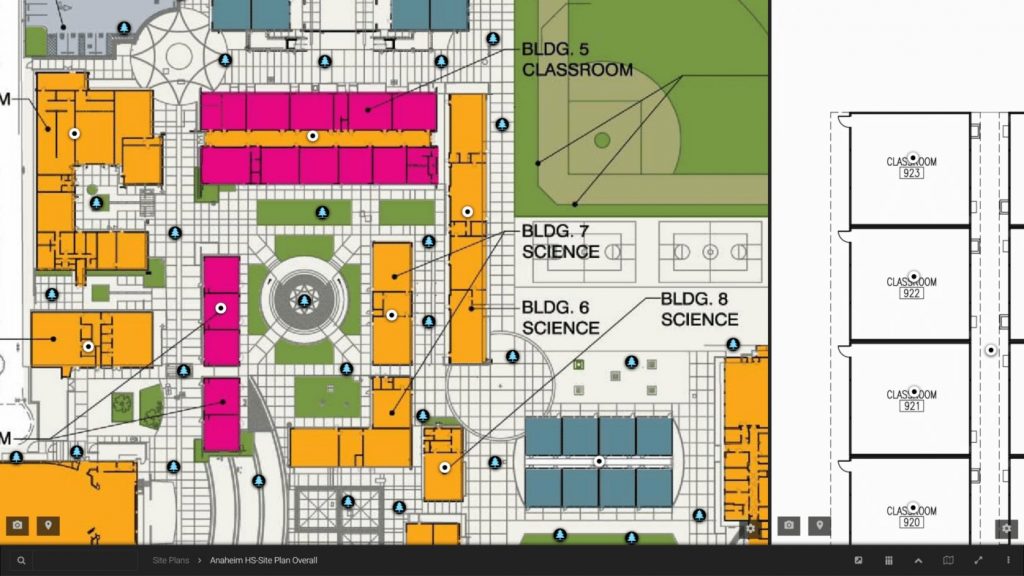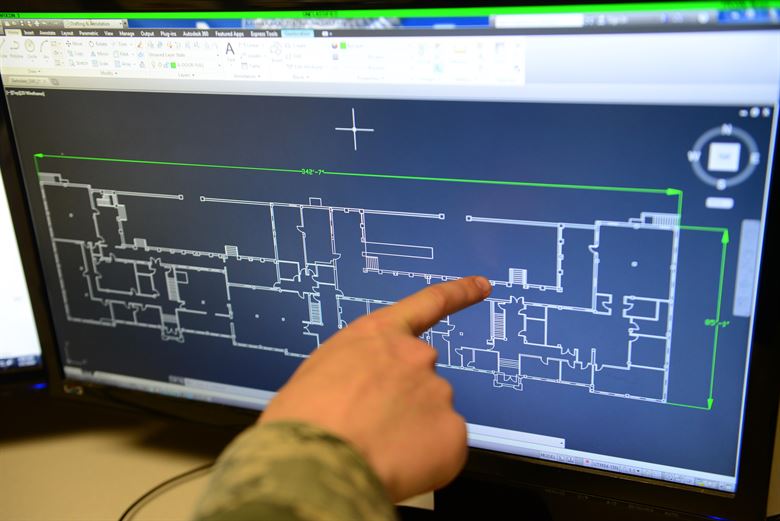
Due to the COVID-19 restriction, many education facilities have closed and moved the entire teaching and learning experience online. Yet, many schools and universities are finding new ways to help their students, staff, and visitors walk into their buildings or education spaces online. 360° digital twins and 3D models became the most straightforward replication for viewers to generate direct experience while prohibited from entering the school space. Creating a virtual, living digital portfolio for school and university also unleashed a greater potential for virtual learning, virtual conference, virtual training or even virtual community. Once a virtual format of the school or university was created, people can also quickly move beyond the idea of virtual reality to mixed reality and augmented reality —- in which all of these has been applied in education to a certain extent even before the pandemic.
Here are some of the questions one will have when we consider creating digital twins for educational space.
1. What does the “digital twin of school” means?
A digital twin is the virtual representation of a physical object (or a system). It captures real-time data and other sources to enable learning, reasoning and dynamically re-calibrating for improved decision making(ref). Therefore, producing a digital twin of school does not only limited to taking photos or capturing 3D model of the school region but also using these data along with other materials, like recording, reports, historical photos, audios, to represent the figure of the school in a virtual format. The digital twin of a physical property should also include the measurement data and other physical information, and it is the key to classify a virtual tour as an actual digital twin. The digital twin of the school does not only act as an important piece of documentation but also enable better decision-making for all stakeholders in their focus areas. It will be discussed in detail in the following sections.

2. What can we do with the 360 virtual reality tour?
The first thing to notice when answering this question is that there are different types/quality of 360 VR tour. You can either choose a RICOH 360 camera (with a thousand pixels) or choose a professional camera like the Civetta (with 230 megapixels). The more precise the camera, the more valid data it captured for different purposes beyond viewing.
Given a virtual reality tour, visitors can explore in 360-degrees and move in-between spaces. Each virtual reality tour can be made of a combination of 360 panorama images, where all of them are connected via URLs or hot spots. It simulated a real walking experience, while virtually, via mouse and image viewers. But of course, there are a lot more you can do with a virtual tour. Many virtual reality viewers commonly enable one to attach additional images, videos, and documents to the tour, like Matterport or VAM2.

3. How to explore the enormous potential of digital twins?
A digital file will never be a digital twin if one cannot connect it with another digital file to create real meaning and influence the workflow or decision-making process. Therefore, connecting the 360 virtual tours to other related documents or files is the first step to unleash the digital education facility’s potential. The education entity can also consider collaborating with stakeholders with different backgrounds, which can maximize its existing digital twins.
Given the functionalities explained in the last question, a digital twin like a virtual reality tour can become the story-line to connect all different types of digital assets together in a logical way.
School and university can use 360 VR tour for marketing, storytelling or engagement purposes. One can explore the education facility and discover some related stories or news materials that can best represent its culture or history.
One can also connect the virtual reality tour with class materials to create a virtual classroom. It comes with the idea of mixed reality or argumental reality. Teacher or instructor can simply benefit from hardware like Blackmagic ATEM, and integrate their own figures into a virtual environment. It can improve the learning experience. It also means instructors can simulate a school environment and act like they are standing in a classroom.
Another question might come along: Why would one need to spend money to produce a virtual tour or 3D model when we already can use Zoom to simulate a fake background? Several points come along, one thing is a 360 panorama background enable the user to walk around the entire scene, yet a fake zoom background cannot do it. Another point is that with 360 HDR images as background, you have much greater freedom in adjusting the background image’s lighting. (HDRI- High Dynamic Range Image) An issue with mixed reality is the difficulty of adjusting the lighting of the integrated figure and the background to make them look similar so one can simulate a viewing experience that makes the viewer’s brain believe it is real.
4. What can the university/education entity get from investing in its digital twins?
- Enable a dynamic record of school/university’s history goes beyond building’s appearances and geographical location and the building’s measurement data, related documents, supportive sources, and else more.
- Better marketing and storytelling experience for upcoming students and parents, especially during/post-covid era.
- Better management of its physical assets.
- Create a virtual engagement space for students and staffs.
- Enable digital planning, maintenance and safety inspection.
- Advanced and upfront school/university culture in adopting new technologies.
5. What are some of the successful examples?
There is no other visual asset management platform that can produce comprehensive and reliable digital twins like VAM2. Many schools in the United States have commonly used VAM2 for safety inspection and emergency response. With the entire school space digitalized with Civetta to produce 360-degrees HDR panorama(VR) and 3D model, VAM2 helps connect all different files with these visual files.
Schools can further use these precise and information-rich images and 3D file for management, maintenance, resource planning; they also collaborate with government facilities like the police station to plan for quick responses in cases like tourist attack or natural disasters.
When the pandemic comes into place, schools and universities are forced to close, and the classroom turns virtually. It is also where the VAM2 portfolio takes places, enabling the teacher to simulate a real-life 360-degree classroom background with Mixed Reality.

6. How can a virtual facility(digital twins) integrate into the existing learning experience?
Once the connections between the virtual tour/3D model with other types of assets are clearly established, it is not difficult to integrate the digital twin of a school into its existing learning experience. For instance, here are some examples.
1. Documentation and maintenance
clients from all industries come to Weiss AG for Civetta, and VAM2 solutions are mainly because they are looking for precise measurement for documentation and maintenance of the building. It is getting more critical to achieving properties management with a distance across many groups via Weiss AG’s solutions. It is the same for school and university, especially for many types of properties in many campus regions. With VAM2, schools and universities can combine their VR, 3D models, live web-cam, and many other documents and file sources in one platform. With periodically tracking, the maintenance history has been recorded with words and captured with media. It also helps with maintenance budget planning, construction planning, staff management and more.
2. Information exchange and communication
Visual Asset Management platform like VAM2 is more than just a cloud/local space where stored all types of resources. Still, a powerful source to help with direct communication and references. With buildings or scenes turns digital twins, one can directly use the digital twin as a reference to visually point out a broken door or window directly on a VR scene in their email. This method has already been commonly used in the oil&gas and aviation industries, which is also growing famous in university and retail management. If one uses a cloud or SaaS version of the VAM2, they can also benefit from real-time updates, where two parties in different areas have access to the same version of the file.
3. Virtual e-learning with Mixed Reality
With the virtual reality created by a high-resolution panorama camera like the Civetta, instructors can benefit from a high resolution 360*180 background images in mixed reality teaching. Instructors can walk around in a green screen studio while pretending it is in a classroom, lab, playground or more. It gives students a realistic feeling in an online course. Everything the school need is a single web-browser, as VAM2 enables a user to direct access to all the files via a browser, with no installation needed.

7. What are some of the cost of generating digital twins for school?
– Cost & time of data capturing
– Time, human resources and hardware for data processing or sorting (3D model)
– Purchase VAM2 licence or SaaS subscription services
Other invisible costs involve the time and energy to retrieve resources from other stakeholders and parties to complete a visual asset management portfolio for the school or university.
8. How to manage all the digital contents created?
As explained in the previous article, producing a school or university’s digital twin is not just capturing all the scenes and producing a virtual tour, but much more than that. Managing all the related digital content is the first step before connecting them up logically and paint a full picture of decision making in the future. Like database management, you might need to consider how to categorize them and name them to make them accessible and searchable. Besides, you can also use hotspot or URLs to connect any type of assets in VAM2.
Unlike Matterport or other visualization tools, VAM2 goes beyond just simply adding a button on your 360 or 3D model; but enables you to change its symbol, colour, add a description to the hot spots, and much more.
It is also essential to consider the accessibility and documentation of your digital management platform(DAM) to make sure the assets are well-protected or managed. It also extended beyond the idea of the virtual tour. With VAM2, you can decide which user will be editor, administrator or viewer only. Each level has different authorities and access rights. With VAM2, it will not automatically delete any file when you uploaded a new file with the same name. This protective system has been commonly used by Weiss AG’s other clients like Shell, BP, FBI and more.

9. What are some of the factors to consider before producing digital twins for your space?
Here are a few questions the school or education entity can consider before producing a digital twin.
– What is the digital twin used for?
For marketing, for fun, for emergency measures, for documentation or digital management? Based on this question’s answer, the school can be very certain which kind of equipment or team they will recruit for digitalization. It can be as cheap as an Apple scan or as expensive as Civetta, Z+F or more.
– What are some of the other contents that the school can collect to produce a digital twin?
Again, a digital twin is not just about scanning and digitalizing the building. There are also other documents that the admin team can collect, students, parents or other stakeholders. It can help list out these digital assets, collect them and upload them into the same visual asset management platform along with the virtual tour or 3D models.
– Do you expect to use the digital twins in the long term?
If yes, it is essential to find at least one staff or even a team to actively manage the digital assets in VAM2, regularly update it, and encourage other participants to share new materials with the admin to ensure the VAM2 portfolio of your school is valid. If there is a recent renovation or new building, one can also consider recruit a scanning team or use the Civetta to scan the new scene and upload it to the VAM2 for comparison and updates. With the SaaS subscription version of the VAM2, school and university do not need to worry about managing the cloud space or any hardware. Still, they only need simple access to any web-browser to achieve digital asset management.
10. Why accurate digital twins portfolio is also essential for school and university?
Even before the pandemic, many schools already implement the Visual Asset Management Platform (VAM2) for their digital twin portfolio. VAM2 has also been a great example that was commonly addressed in NBC News in the US. Accurate digital twins, including reliable measurement data and geographic information, can be used beyond the scope of marketing and education and for building maintenance, reconstruction, safety management, emergency response, and law enforcement.
Author: Christiane Zhao
